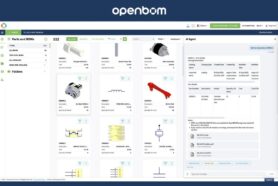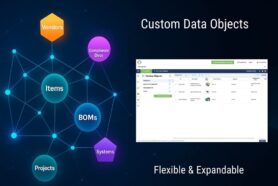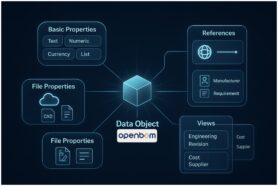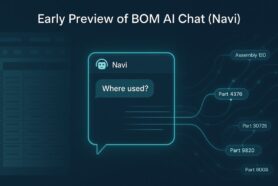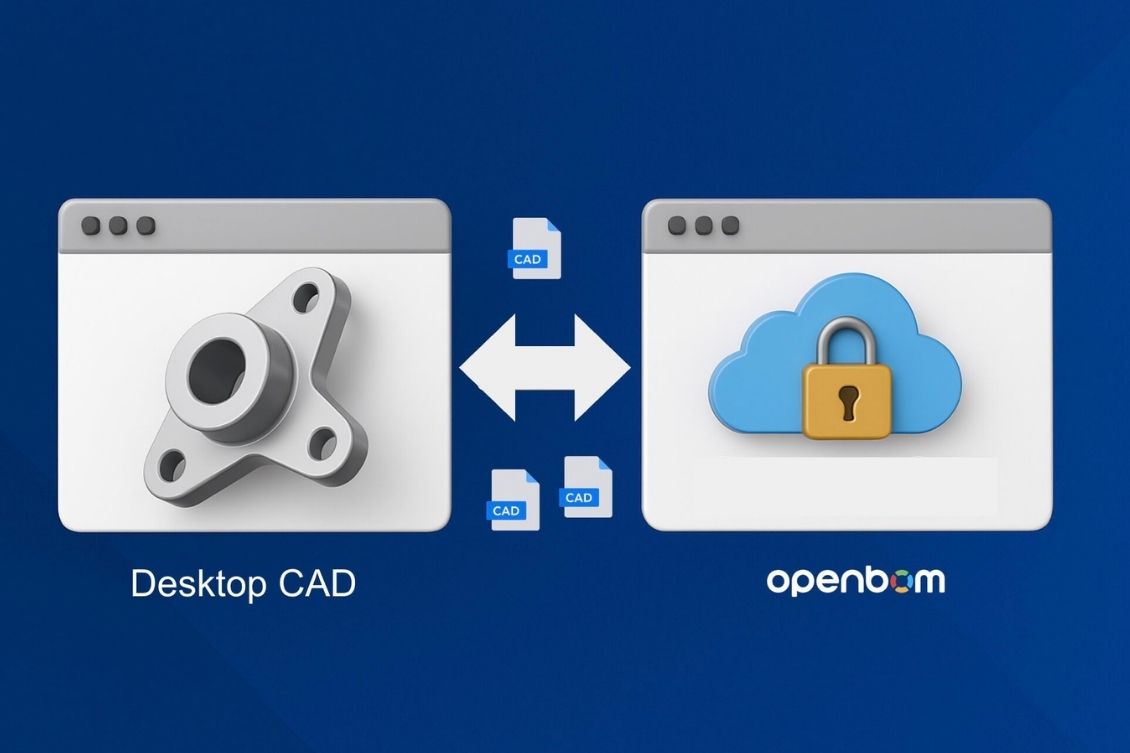
While cloud-native CAD tools are on the rise, the vast majority of engineers and manufacturing companies still rely on traditional desktop CAD systems like Solidworks, Inventor, and others. Even hosted desktop solutions remain prevalent. In this reality, managing CAD files—tracking changes, avoiding conflicts, and ensuring up-to-date revisions—continues to be a significant challenge.
So, how do we move forward without leaving existing tools behind?
The Challenge: Managing File-Based CAD in a Cloud World
Despite the push toward cloud-native solutions, most product design work still happens on file-based desktop CAD systems. These tools are efficient, familiar, and often highly optimized for specific industries. But their file-based nature presents limitations:
- Local storage or shared drives can lead to version confusion
- Manual file handling increases the risk of overwriting changes
- Collaboration is fragmented and often offline
- Traditional PDM systems are heavyweight and expensive
The challenge is clear: how do we keep using these powerful desktop tools while taking advantage of modern, cloud-native data management—especially for change and revision control?
The Solution: OpenBOM Design Projects + Smart Sync
OpenBOM addresses this challenge head-on with Design Projects, a simple yet powerful way to manage CAD files in the cloud—while keeping desktop CAD workflows intact.
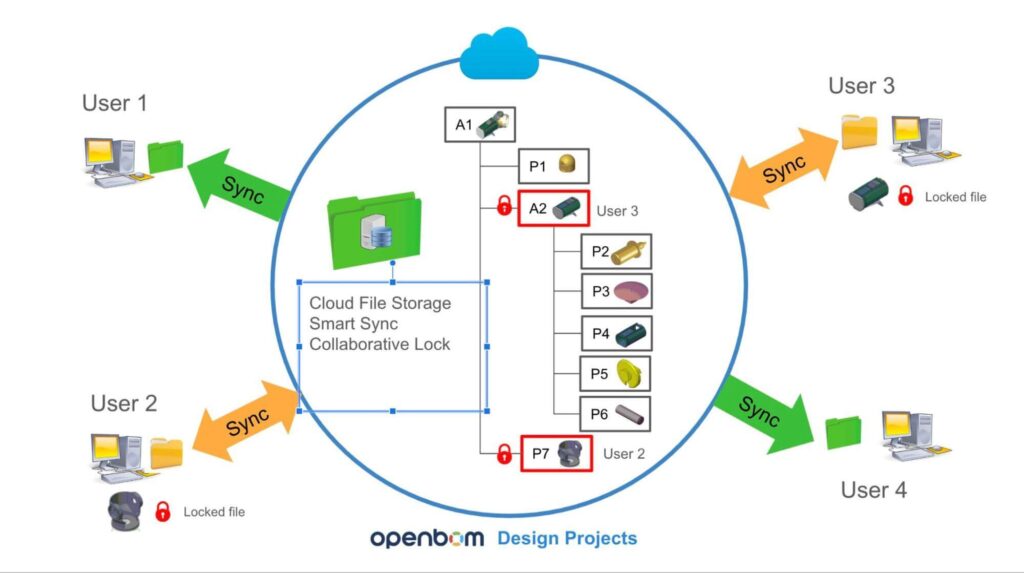
Design Projects allow you to store all your design files in the OpenBOM cloud platform and sync them to your desktop. Whether you’re using Solidworks or any other desktop CAD tool, you can work locally where it’s most efficient, and then sync changes back to the cloud using OpenBOM Workspace Manager.
This Smart Sync approach creates a two-way bridge:
- Files are always available from the cloud
- Work happens locally, where CAD performance is best
- Sync keeps everything aligned and up to date
👉 Watch this introductory video to see how it works in action.
Solving Collaboration with Cloud Collaborative Lock
From countless conversations with our customers, we’ve learned that check-in/check-out must be fast, intuitive, and reliable—especially in a distributed cloud environment.
That’s why OpenBOM developed Cloud Collaborative Lock, a modern, cloud-native mechanism that seamlessly locks files in your desktop environment, preventing simultaneous edits and ensuring data integrity.
In our latest release, we’ve gone a step further.
“We continue to improve the cross-application and user notifications for Lock Status. When you lock a file from CAD (Solidworks in my example), all users on your team will be notified instantly.”
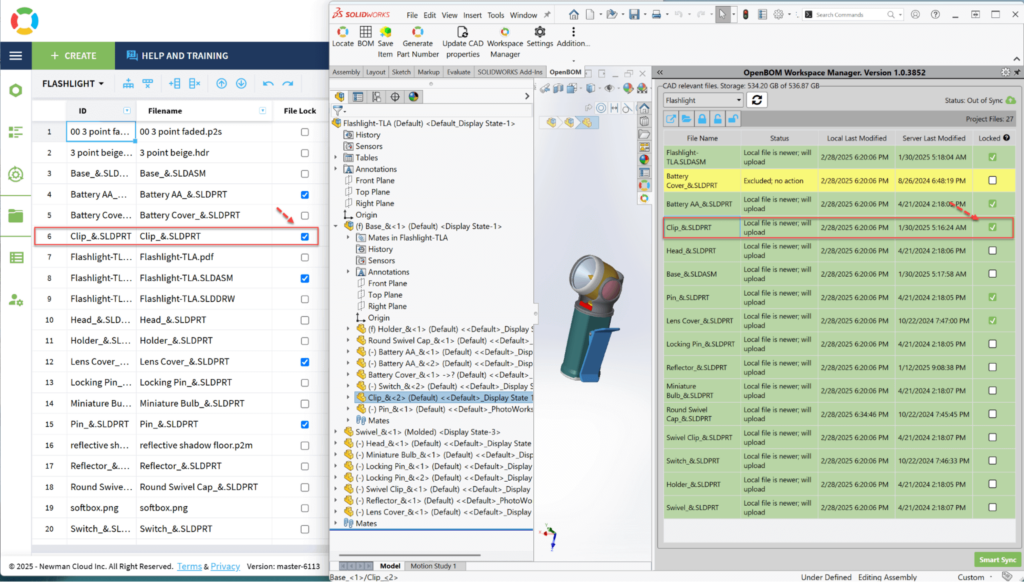
This means if you lock a file in Solidworks, your entire team sees the update in real-time—regardless of where they are. We’re rolling this feature out across all desktop CAD integrations as part of our regular release cadence.
👉 Watch the feature video to learn more about Cloud Collaborative Lock.
Conclusion: Modern Cloud + Desktop CAD = No More File Conflicts
OpenBOM offers a modern approach that blends the power of the cloud with the efficiency of desktop CAD. By integrating Design Projects, Smart Sync, and Collaborative Lock, we eliminate the risk of multiple engineers editing the same file—even when working from separate desktops across the globe.
This is not just a workaround—it’s a true next-generation solution for modern engineering collaboration.
If you’re still struggling with old PDM systems or trying to bolt cloud tools onto desktop CAD, it’s time to see how OpenBOM can bridge that gap—elegantly and efficiently.
REGISTER FOR FREE and check how OpenBOM can help.
Best, Oleg
Join our newsletter to receive a weekly portion of news, articles, and tips about OpenBOM and our community.



